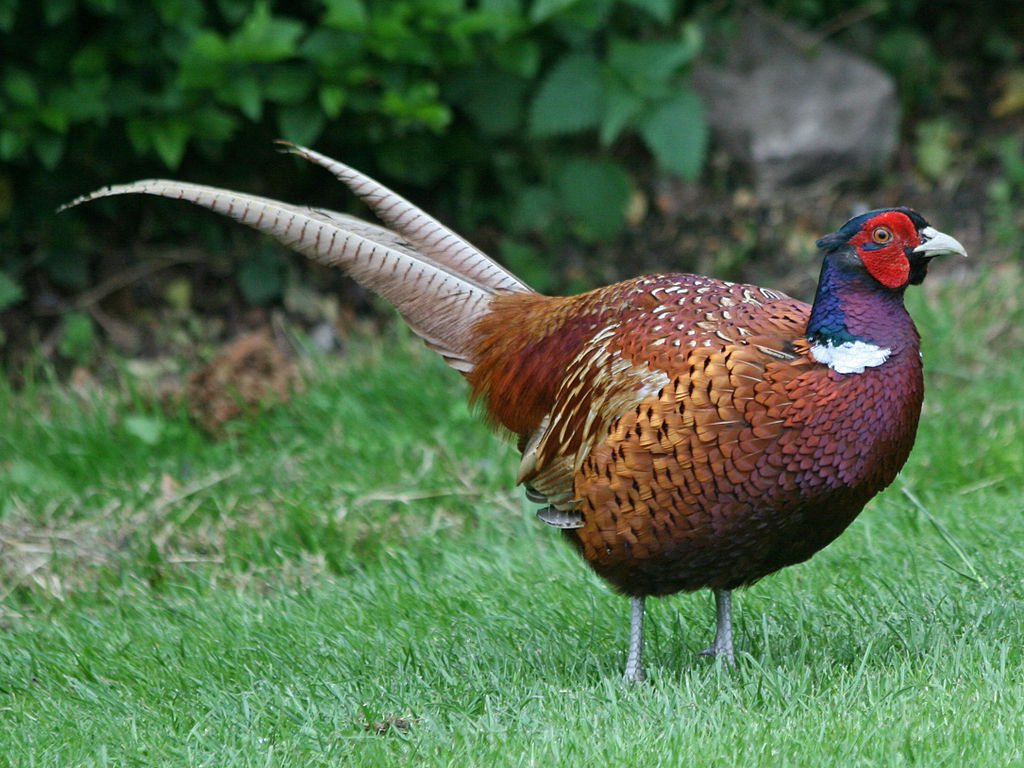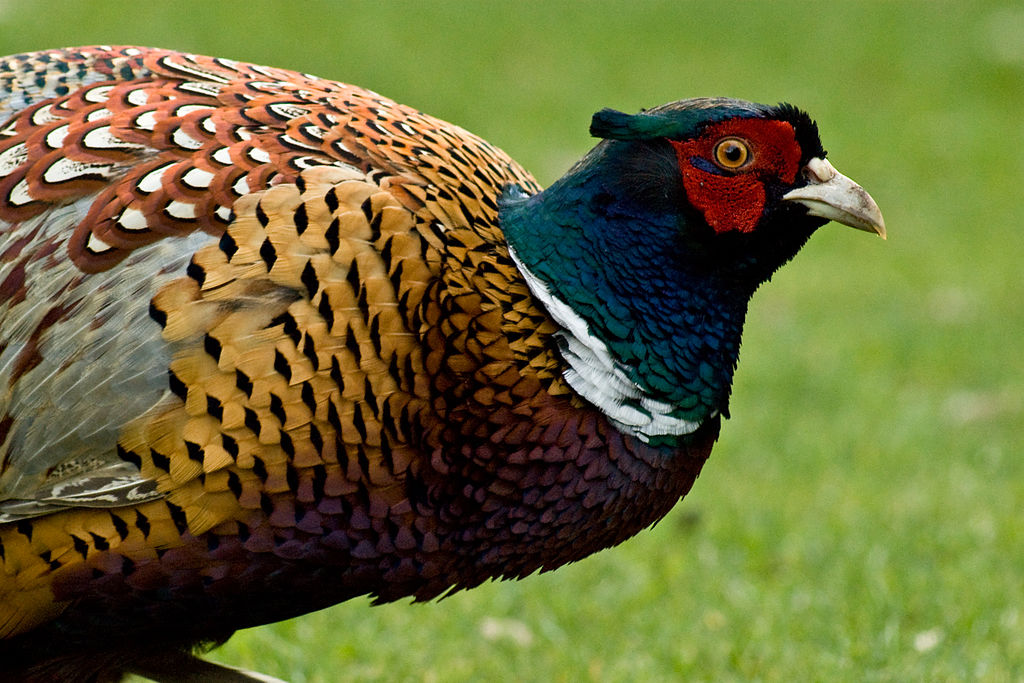British Wildlife of the Week
Pheasant

Today is October 1. That means the pheasant-shooting season has officially started here in the UK. One of our most striking birds, the male common pheasant has coppery plumage, a metallic green head with blood-red face wattles, and a barred tail that’s as long again as his body. Although today a quintessential feature of the British countryside, the pheasant looks too extravagant, too exotic to really belong here. And that’s because it doesn’t.
Originating from Asia, the pheasant was first brought to Britain by the Normans – or possibly even earlier, by the Romans – but it is now so ubiquitous in rural areas that it has become a native species in all but name. In fact, thanks to us, this flashy, flamboyant gamebird is now a cosmopolitan creature. We have released them into about 50 different countries worldwide and they can now be found on every continent except Antarctica. It’s even the state bird of South Dakota in the USA.

Image Source: Andy Vernon
The reason for all of these introductions is simple: pheasants look good, they taste good, and they provide ‘sport’ for those who enjoy shooting birds. The rise of professional gamekeeping and organised shoots on country estates during the Victorian era led to the pheasant becoming an overwhelmingly common sight in the British countryside. On 18 December 1913, a staggering 3,937 pheasants were shot by a party that included King George V – a record ‘bag’ of pheasants for a single day.
But that number wouldn’t even dent the UK’s population of pheasants today. Every year, around 35-40 million pheasants are specially reared in breeding pens to sustain the multimillion-pound game industry. Then, in the summer, the birds are all released into the countryside, in forests, copses and farmland, to augment the population that already lives there. All of this is in readiness for the shooting season, which runs from October to the end of January. It is therefore virtually impossible, should you see a pheasant, to know whether it was hatched in the wild, or reared specifically to die by a hunter’s gun.
Come autumn, pheasants outweigh all other native British birds put together. The breeding population of all UK birds is thought to be just under 160 million individuals, with a combined weight of around 24,000 tonnes. When up to 40 million pheasants are released into the countryside, it is equivalent to a living biomass of 30,000 tonnes. The number of pheasants is, of course, quickly whittled down – by both predators and guns – but for a brief time at least, a single non-native species not only becomes by far the most numerous bird in the British countryside, it also has 25% more biomass than all our native breeding bird species combined. Many experts worry about the effects such unnaturally large numbers of pheasants have on the populations of insect larvae and reptiles such as slow-worms and adders.

Image Source: David Croad
Gamekeepers sometimes illegally shoot or poison birds of prey near pheasant release pens, to protect their captive-reared birds. Buzzards do indeed kill young pheasants, but considering the vast numbers of the gamebirds that are reared and released every year, most conservationists believe that this predation cannot be considered an economically significant problem. Yet since 2016, the government’s conservation watchdog, Natural England, has issued licences for ‘buzzard control’ near pheasant pens to prevent the predation of young pheasants, which are classed as livestock. The number of licences issued is, admittedly, quite small – four in 2016 and 2017, for example, and a single licence in 2018 – but it still seems very strange to cull a legally protected native bird of prey in order to reduce the (already very minor) threat they pose to an introduced, alien bird that is being deliberately released in enormous numbers.
If you nurture a grey squirrel back to health after an injury and release it back into the wild, you could be fined for introducing a non-native pest. But people are perfectly allowed to flood the countryside with up to 40 million additional pheasants every year with impunity. And that doesn’t sit quite right with me.
In the next (special, extra-long) British Wildlife of the Week, we’ll be looking at the controversial culling of the UK’s largest living land carnivore – the badger.

Pingback: British Wildlife of the Week: House Spider - The Nature Nook